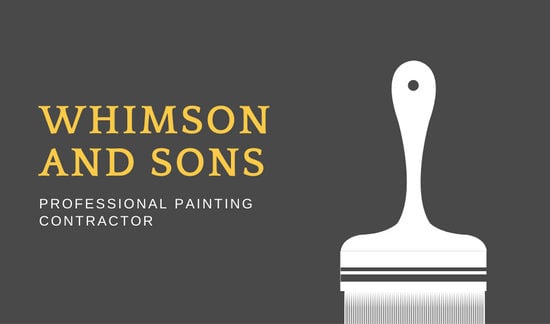Understand Just How Seasonal Problems Influence The Success Of Commercial Exterior Painting And Learn The Perfect Durations To Guarantee Durable End Results For Your Task
Understand Just How Seasonal Problems Influence The Success Of Commercial Exterior Painting And Learn The Perfect Durations To Guarantee Durable End Results For Your Task
Blog Article
Uploaded By-Doherty Whalen
When you're preparing a business outside painting job, seasonal factors can make or break your outcomes. You'll wish to take into consideration exactly how temperature level and humidity influence paint application and drying times. Picking the best season can guarantee your paint sticks appropriately and lasts much longer. However which periods are absolutely the best for this type of job? Let's check out the crucial elements that can impact your job's success.
The Impact of Temperature on Paint Application
When you're preparing a commercial external paint task, the temperature can dramatically affect how well the paint adheres and dries out.
Ideally, you wish to paint when temperatures vary between 50 ° F and 85 ° F. If it's also chilly, the paint might not treat correctly, causing concerns like peeling off or fracturing.
On the other side, if it's also warm, the paint can dry as well rapidly, preventing appropriate bond and causing an uneven surface.
You should additionally take into consideration the time of day; morning or late afternoon offers cooler temperature levels, which can be more desirable.
Always check the maker's recommendations for the certain paint you're using, as they usually offer assistance on the suitable temperature level variety for optimal outcomes.
Moisture and Its Impact on Drying Times
Temperature level isn't the only ecological aspect that influences your commercial external painting job; moisture plays a substantial role also. High moisture levels can decrease drying out times substantially, affecting the general quality of your paint job.
When the air is saturated with dampness, the paint takes longer to heal, which can bring about issues like inadequate attachment and a higher danger of mold growth. If you're repainting on a particularly damp day, be prepared for extended wait times between coats.
It's essential to check neighborhood weather conditions and plan as necessary. Ideally, go for moisture levels between 40% and 70% for ideal drying out.
Maintaining these consider mind guarantees your job stays on track and provides a long lasting surface.
Best Seasons for Commercial Exterior Painting Projects
What's the very best time of year for your industrial exterior paint tasks?
https://indoorpaintersnearme08653.glifeblog.com/34074066/the-essential-guide-to-locating-a-qualified-paint-business and early loss are generally your best bets. During these seasons, temperature levels are mild, and humidity degrees are typically reduced, developing excellent problems for paint application and drying.
Prevent summer's intense heat, which can cause paint to dry as well promptly, resulting in inadequate adhesion and surface. Likewise, wintertime's chilly temperature levels can hinder proper drying out and healing, risking the longevity of your paint work.
Go for days with temperatures between 50 ° F and 85 ° F for optimal outcomes. Remember to examine the regional weather forecast for rain, as wet problems can wreck your task.
Preparation around these elements guarantees your painting task runs efficiently and lasts longer.
Final thought
Finally, planning your industrial outside painting tasks around seasonal factors to consider can make a substantial difference in the end result. By organizing work during the suitable temperatures and moisture degrees, you'll ensure far better bond and drying out times. Bear in mind to keep an eye on regional weather forecasts and pick the right time of year-- spring and early autumn are your best bets. Taking these steps will certainly assist you achieve a durable and specialist finish that lasts.
